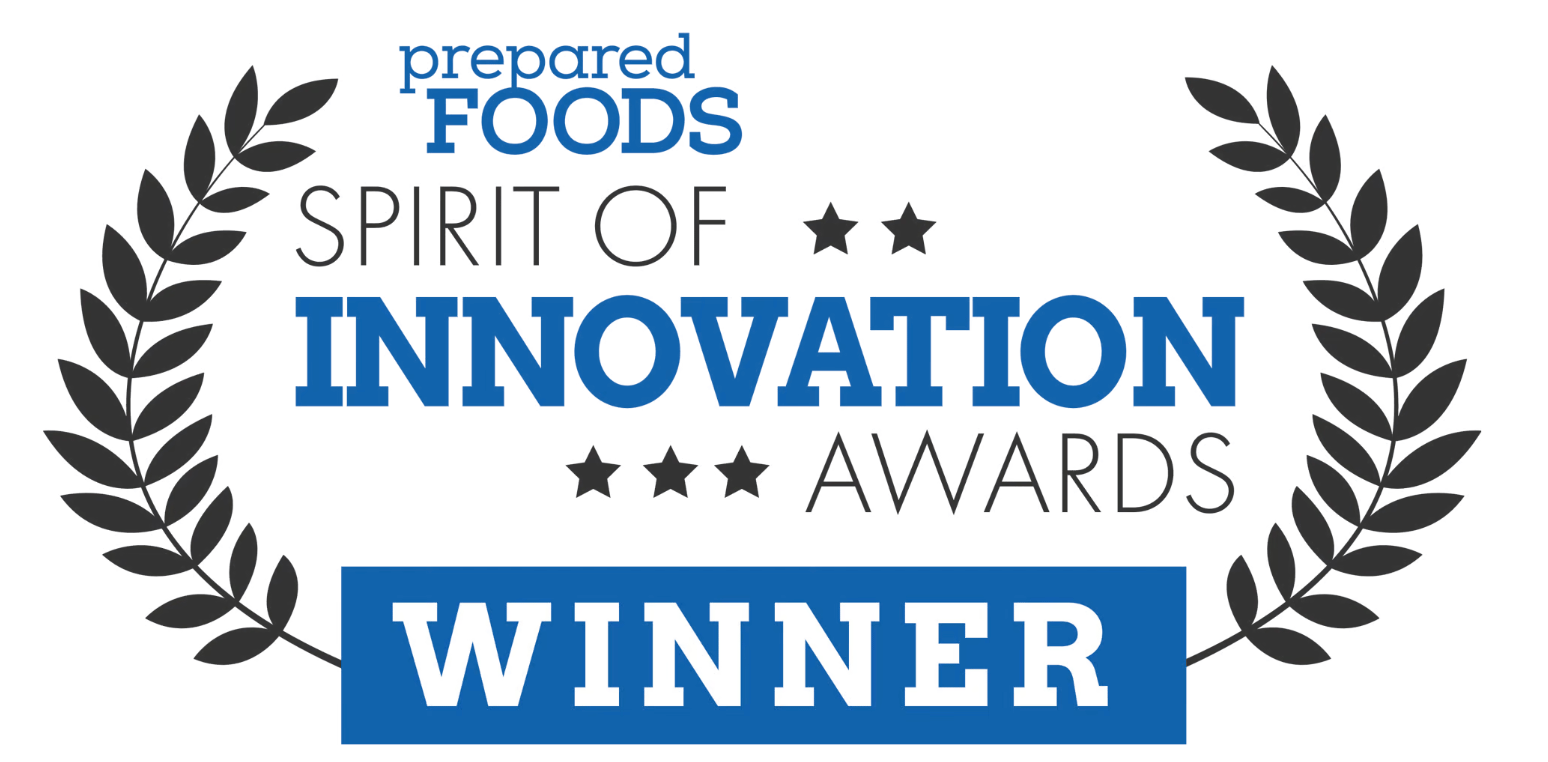WHAT’S NEXT IN 2025?
SUSTAINABILITY / REGENERATIVE AGRICULTURE

TAZO reformulated its four original best-selling blends: ZEN, Awake English Breakfast, Chai, and Darjeeling. Officials said these first-ever TAZO Regenerative blends are USDA Organic Certified, made with Fair Trade USA Certified ingredients, made with Rainforest Alliance Certified teas, and are made with ingredients grown with verified regenerative organic agriculture practices that help conserve nature and protect biodiversity. Credit: LIPTON Teas and Infusions
Editor’s Note: For a comprehensive 2025 look at all the angles associated with regenerative agriculture, Prepared Foods interviewed Tina Owens, founder of Snowehaven Regeneration and a strategist and futurist within the US organic and regenerative agriculture movements.
By Erin Costello
Regenerative agriculture discussions taking root, gaining ground for 2025.
Field(s) of Dreams
Tina Owens
Founder, Snowehaven Regeneration

Credit: Nik Degraaf Photo / Courtesy Tina Owens
Prepared Foods: This year you were involved in some important research, including a Nutrient Density Alliance (NDA) white paper about engaging consumers about soil’s link to nutrition. You also helped review the top 100 CPG companies and their regenerative agriculture commitments. This movement is starting to gain traction across the agricultural and food sectors, with leading food companies such as Nestlé, PepsiCo, General Mills and McCain adopting specific targets.
Looking back on 2024, can you point to manufacturer advances in regenerative agriculture? What impressed you?
Tina Owens: Thank you for drawing attention to the scale of the regenerative agriculture movement. What has stood out for me this year is the fact that the foundations for future potential stability and market maturity within this decade are now in place. Sixty-eight of the top 100 food companies on the planet all had a specific commitment or mention of regenerative agriculture by the beginning of this year. This represents more than one trillion worth of companies who are acknowledging the potential of regenerative agriculture to transform and reduce risk scenarios within their broader food and agriculture supply webs.
Regenerative agriculture is not a fringe movement, but a mainstream movement with implications for the entire span of soil-based agricultural production systems. This year, 2024, also was the year that institutional shareholder interest started ramping up in earnest for how CPGs commit and communicate the benefits of their regenerative agriculture programs and the potential for current or future risk mitigation in their supply sheds.
PF: How about what we did not see during 2024? What conversations are still needed?
Owens: Although there have been significant commitments on acreage, crops, global geographies, and more—there remain large questions about whether the farmer is offered a premium for converting to regenerative agriculture practices in the short- or long-term. Meanwhile, CPGs need the potential emissions reduction from regenerative practices to be measured in the field and captured within their supply sheds for their public Scope 3 commitments. There are still gaps in what gets measured, how the data is aggregated, how it relates to emissions reduction, and where and whether any costs get absorbed by a margin-centric industry.
We still need some breakthroughs involving farmer support and investment capital to balance the needs and outcomes of the system for all stakeholders. Many influential players are currently working out how farmers get additional transition support, so my hope is that this will not remain a gap for much longer.
PF: How about ingredient supplier contributions? Can you point to industry leaders in this realm?
Owens: When we look at where the missing middle is in the system it is clear that ingredient processors deserve a great deal of credit for how they are balancing the demands of their stakeholders, and also that we still have a lot of work to do on processing infrastructure. Processors hold many of the keys to how farmer contracts are awarded, whether there is any segregation of regenerative materials to market to consumers, and how the rotational crops within a regenerative system are valued differently from standard commodities.
That said, our hyper-efficient production systems—with decades of cost refinement on standardized commodities like corn, soy, beets, and wheat—create a price expectation and barrier that consistently rewards existing entrenched systems simply because they are already operating at scale. If we want to reward different system outcomes, then balancing separate production and offtake needs with fair pricing for farmers is still a place where considerable work needs to be done.

Progressive Partnership: September saw Ahold Delhaize USA and General Mills share plans to address Scope 3 greenhouse gas emissions within their shared value chain. The two companies said they will support farmers as they adopt regenerative farming practices. The program also involves the Ecosystem Services Market Consortium (ESMC), a nonprofit member-based consortium. Farmers will receive technical and financial support to implement techniques like cover cropping and nutrient management, and a combination of field sampling and modeling will estimate net greenhouse gas emissions. Credit: General Mills
PF: Inside a food company, who are the advocates for regenerative agriculture sourcing?
Owens: This is what is great about the regenerative movement—it is not about any one function or business unit leader, but rather about those throughout all economic and agricultural systems who embrace a collaborative and collective solution by acknowledging where our current actions are dwindling resources in ways that cannot be sustained.
To regenerate is to acknowledge the validity of a wide array of principles on everything from continuous living cover in fields, to the role of communities in stewarding land, to how consumers choose products that take these broader systems into account. The reality is that those in leadership positions need the clear business mandate to do so. By having many different business functions and viewpoints working to tackle shared solutions, it becomes more likely that a feasible business case can give executive leadership the tools they need to support a strategy. Not just a procurement strategy, or a sustainability strategy, but a company and system-level strategy that is shared across multiple business leaders and those who activate it in the day to day.
PF: Has there been a corporate executive title missing from that picture? Could change that in 2025?
Owens: Let’s focus on the 68 of the top 100 food companies who have shared something around a regenerative focus or mandate. Right now there are individual champions within those companies who have to prove that a new system of operation is worth pursuing that, in many cases, shines a spotlight on how existing systems are broken. This can create a dual narrative within a company that is difficult for leaders to address. It also is why we cannot rely on only one department or one leader to be given the mandate to embed regenerative systems.
What is missing right now is the mindset shift of entrenched “business as usual” outcomes, which is insisting that the current system will continue to perform at historical levels. But never before have past results been less indicative of future potential in agriculture when a confluence of science is showing us where we have eroded, propped up, extracted, and degenerated the foundations needed to sustain living systems.
PF: Let’s shift our discussion here. In your opinion, what do consumers know or understand about regenerative agriculture and its benefits?
Owens: The awareness of how agricultural production practices are tied to the systems of human health has been growing for many years. Hartman Group research suggests that younger generations of consumers appear to have internalized the message—that what they purchase and how it was made carries an innate cost that is not reflected solely in the price tag.
PF: Have you seen any shift in that understanding? Can you point to positive movement?
Owens: We can start in 2020 with Hartman Group survey data. In it, organic consumers shared that soil health and ecological principles were major drivers in purchase intent. And the natural shopper is showing significant interest in regenerative agriculture and outcomes like nutrient density that continues to build in awareness (Non-GMO Project). Add to this that 66% of consumers are choosing products based on health needs (according to SPINS) and you can see that the potential to engage consumers goes well beyond the standard “values based” messaging upon which past industry movements have been built.
Within the Nutrient Density Alliance white paper we worked to address the gap in understanding among marketers for the vast potential that regenerative agriculture holds by asserting that discussing regenerative agriculture with consumers does not require marketers to adopt an entirely new approach or to translate complicated soil science. NDA believes regenerative Agriculture increases the ability to connect on matters of health, quality, and nutrition, which are core tenets of how brands already engage with consumers.

Applegate announced its goal to transition all of its beef hot dogs to beef raised on verified regenerative grasslands by the end of 2025. Implementing this change across its entire beef hot dog portfolio is expected to contribute to the regeneration of six million acres of grasslands, which could increase the current regenerative acreage of Applegate suppliers by more than 2,200%. Credit: Applegate Farms LLC / Hormel Foods
PF: So far, what’s been a “best case” example of marketing regenerative agriculture to consumers?
Owens: I could list dozens of brands here, but instead I would like to point you toward the groups that are aggregating lists of regenerative brands in service to consumers finding them online or in the grocery store: Regenmade, Savory, Regenerative Organic Alliance, and key retailers in the natural and organic space. There are two brands owned by very large CPGs with products in national distribution, which are present in almost all retailers nationwide: TAZO Tea and Applegate hot dogs. TAZO created a campaign on TikTok with Edelman called “The World’s First Regenerative Ad” that is worth checking out as it includes all of the tenets that marketers look to in proving that a consumer-facing campaign has merit.
PF: What needs to happen in this area in 2025 and who should lead that effort?
Owens: Most of the large food companies wading into regenerative are treating the program like a back-office emissions reduction program. They are leaving dollars on the table with their consumers by eschewing the consumer messaging in quality and taste that will draw people to their brand. I hope deeper awareness becomes embedded in the industry on this front.
We also have a lot of work to do across the collective movement in proving the on-farm economic benefits of regenerative agriculture production systems. There is a lot of anecdotal evidence once you get beyond the standard row crop systems that should be aggregated with more rigor so that producers see a clear path for their own land management considerations.
PF: If a food and beverage company wants to make meaningful strides in this area in 2025, what do you recommend?
Owens: Embrace the cross-sector efforts of a collective system. There has never been a better time to go beyond the singular cost-per-bushel viewpoint of food and agriculture to understanding more about how soil erosion from bare ground, monoculture, reliance on tillage, and missing continuous living cover are creating much riskier and costlier food production systems going forward. Keeping the soil covered not only leads to better water infiltration but also additional crop rotations that can be aggregated for consumer interest and demand. Let’s not let what is already scaled exclude the things that create system resiliency going forward.
PF: We’ve learned about regenerative agriculture’s contribution to better soil health and, ultimately, agricultural products with higher nutrition profiles. That suggests that corporate nutritionists should join this discussion. Would you agree?
Owens: Yes. And if brands want to learn more about the link between soil health and nutrient density they can read more within the Nutrient Density Alliance white paper: “Engaging Consumers on Regenerative Agriculture: How Brands Can Integrate Nutrient Density for Top-Line Growth.”


